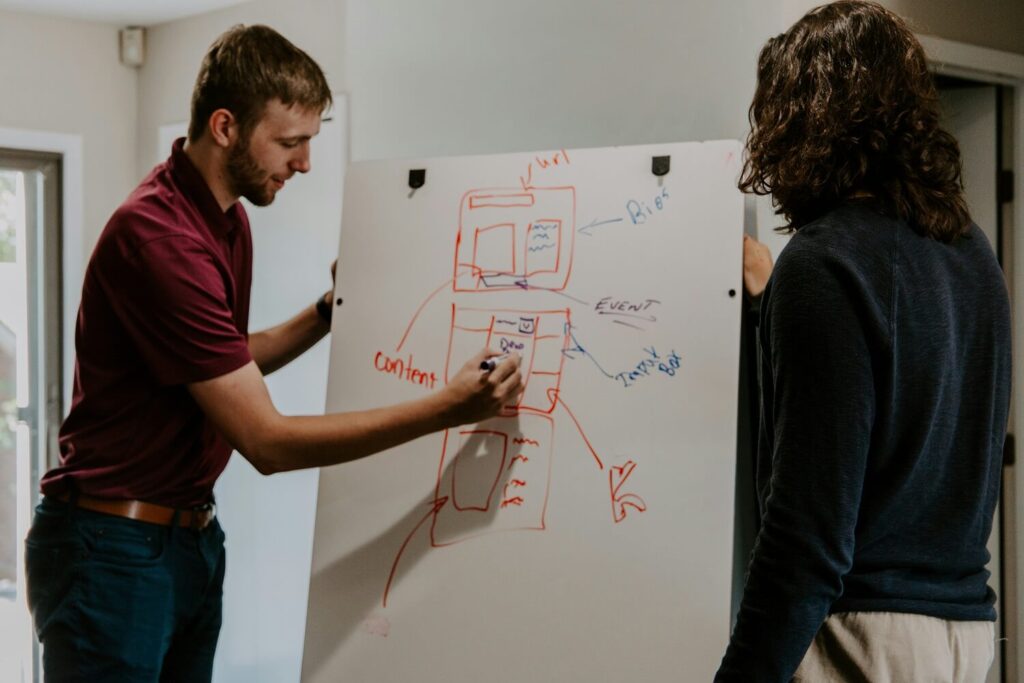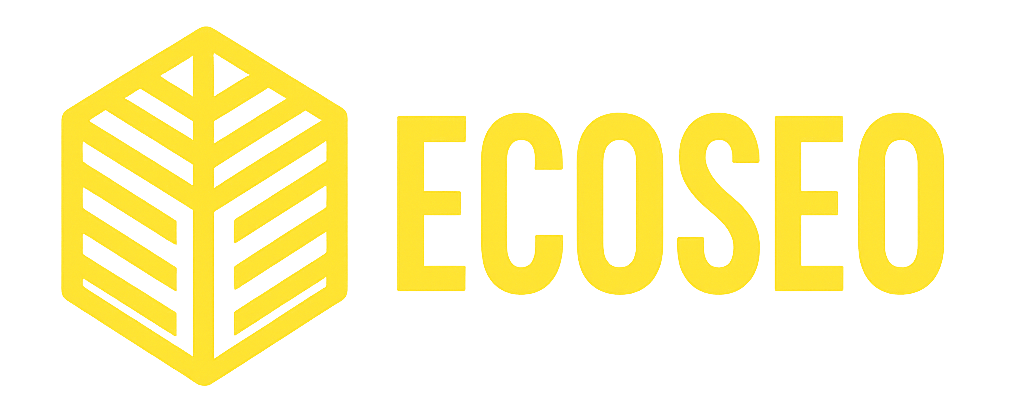You have been spending weeks (maybe months) pouring energy into a website. The copy’s great, the design looks awesome, everything feels ready to go. And then… nothing. No visitors, no sales, just digital tumbleweeds.
Frustrating, right? What you’re missing? Links. They’re the currency of the internet and without them Google barely notices you exist.
The number of referring domains (unique websites linking to a page) is often cited as one of the strongest factors correlating with a page’s SEO success and rankings.
Here’s the deal: link building in future 2025 and beyoand isn’t about spamming 100 random sites. It’s more like a mix of patience, creativity and a bit of hustle. Done right it can get your site to the top of the rankings and get people clicking through.
What do we mean by “link building”?
In plain English it’s just getting other sites to link back to yours. Think of it as a trust signal – like when someone says “Hey these folks know what they’re talking about”. Google sees those links as proof you’re worth paying attention to and that’s what gets your site to the top of the search results.
And here’s the kicker: the sites with strong high quality backlinks almost always dominate the first page of Google. That’s not just gut feel – Backlinko case study dug into it and found the top ranking pages are stacked with strong links. Makes sense too, considering more than half of all web traffic comes straight from organic search.

Why Link Building Still Matters in 2025
If you’ve been in the SEO game for over 15 years (like me) you notice that backlinks are basically the oxygen of SEO. Without them your site struggles to breathe. And here’s the thing—one solid backlink from a trusted site can often do more for you than a thousand junk ones from spammy blogs. Backlinko actually tested this and the data backs it up.
Google’s been tightening the rules too. That 2023 Helpful Content Update? It pushed relevance and trust front and center. Lazy tricks and low-effort tactics don’t cut it anymore—you either earn links the right way or you get buried.
Easy wins for beginners – If you’re just dipping your toes into SEO don’t stress. There are a few low-hanging fruits you can grab that still move the needle.
Profile & Directory Links
This one’s as straightforward as it gets. Set up NAP profiles on platforms that matter in your space—LinkedIn, Crunchbase, maybe Dribbble if you’re a designer or Clutch if you’re an agency. Drop your website link in there. For local businesses don’t skip Google Business Profile, Yelp or even the old-school Yellow Pages.
These links may not be glamorous but they’re powerful. They tell Google who you are, where you are and why you’re legit. Plus they help with local search rankings. If your competitors show up on maps and you don’t it’s often because they’ve claimed and optimized these profiles.
Claiming Unlinked Mentions
This kind of link building method is called Broken Link building. This one feels like found money. Sometimes people talk about your brand in articles or reviews but forget to link back. That’s a missed opportunity.
Set up alerts—Google Alerts or tools like Mention work fine—and when you spot your name dropped without a link reach out. A simple polite email like, “Hey thanks for mentioning us. Would you mind linking our site so readers can find us?” goes a long way. Most editors don’t mind and you turn those mentions into actual backlinks that send both traffic and authority your way.

Manual Niche Blog Commenting
Here’s an old-school tactic that still works if you do it right: commenting on blogs in your niche. And no, I don’t mean dropping a lazy “Great post!” with your link attached. That’s spammy and gets you ignored.
I mean reading the post, actually thinking about what the writer said, and adding something useful—maybe a tip, a different angle, or even a personal story.
Yes, most of these links are “no-follow” so they won’t send your site straight to page one. But they do something else that matters—people see your name, they click through, and you start building trust with both readers and blog owners.
That can lead to better stuff down the line like guest posts or collaborations.
Social Media Bio Links
This one’s easy but easy to overlook. Every platform—Facebook, Insta, TikTok, even Pinterest—gives you space in your profile for a link.
Most link building specialist have told me that these kind of links is not worth much but I do not agree. Social media link building isn’t just about getting quick SEO points. It’s about boosting visibility, driving traffic, building brand authority, and opening doors for genuine do follow backlinks. Think of it like laying the groundwork for your link-building efforts—you’re not building the house yet, but you’re setting a solid foundation for everything that comes next.
Use it. It won’t magically boost your SEO since most of these links are no-follow but that’s not the point. They send people straight to your site and show Google you’re an active brand with a presence across the web.
Forum Participation
Forums and online communities (think Reddit, Quora or the nerdier corners like Stack Overflow) are goldmines if you’re willing to put in the time. The trick? Don’t show up pushing your link around like a street flyer. Answer questions. Share real advice. Tell people what’s worked for you.
Once you’ve earned some trust, dropping a link that actually helps doesn’t look promotional—it looks natural. And those clicks can turn into steady traffic while you slowly build a rep as “that person who actually knows their stuff.”

Intermediate Link Building Techniques: Scaling Up
Got the basics down? Cool. Now let’s crank things up a notch with five tactics that actually move the needle.
Guest Posting
Guest posting is simple in concept but powerful when done right. You write an article for someone else’s blog in your niche and sneak in a link back to your site—either in the content or your author bio.
The trick? Don’t just pitch anything. You need a compelling idea that helps their audience. Something like, “Here’s how to double your SEO traffic without spending a dime.” Nail that, and site owners usually bite.
We’ve seen this in action: a fitness coach landed a guest post on a DA 40 site, and their traffic literally doubled. That’s the kind of boost a well-placed, relevant post can give. Guest posting isn’t just about links; it’s about authority, exposure, and long-term SEO gains. The catch? It takes time, research, and solid writing—but it’s worth it.
Podcast Link Building
Here’s one that’s fun: get yourself on a podcast in your niche. Most podcasts include links to guest websites in the show notes, which counts as a backlink from a site with usually strong authority.
But it’s not just about SEO. You’re also getting your voice in front of a whole new audience. Think about it—podcasts are huge now. Over half of Americans aged 18+ listen every month. That’s a lot of ears that could be checking out your website after hearing your insight.
Show up, give value, and those links—and the audience—come naturally. It’s networking and link building rolled into one.

Broken Link Building
Broken link building involves finding dead or broken links (e.g., 404 errors) on relevant, high-quality websites and suggesting your own content as a replacement.
Tools like Check My Links or Ahrefs’ Broken Link Checker help identify these opportunities. You then email the site owner, pointing out the broken link and offering your URL as a fitting substitute: “I noticed a broken link on [page]—my [content] covers the same topic and could work.”
The method is effective because it’s non-intrusive and solves a problem, but it requires relevant, high-quality content to pitch. Broken link building is a strategic, scalable way to earn authoritative links with minimal content creation.
Resource Mention Outreach
This tactic of Resource Mention Outreach involves identifying “resources,” “links,” or “recommended reading” pages on websites in your niche and pitching your content for inclusion. The goal is to secure backlinks from curated lists, which are often hosted on high-authority sites like trade organizations or educational platforms.
A target goal for resource page link building campaigns reported by one agency is a 40%-60% success rate for adding a link. This provides a stark contrast to the general outreach success rate, suggesting that when executed perfectly—by identifying the right page, crafting a highly relevant resource, and personalizing the pitch—the inherent intent of a resource page to link out can lead to a significantly higher conversion rate than general link building.
Collaborative Content
Collaborative content involves partnering with bloggers, influencers, or industry experts to create content like expert roundups, interviews, or co-authored posts, where each contributor earns a backlink to their site.
For example, a roundup titled “Link Building for SEO” includes links to each expert’s website. The purpose is to build backlinks, tap into the audiences of other contributors, and create shareable content.
Neil Patel cites that consistent blogging can result in up to 97% more inbound links. This is because blogger roundups, where multiple bloggers contribute to a single post, create a valuable piece of content that attracts more links from other websites

Advanced Link Building: The Good Stuff
Once you’ve played with the basics of backlinks, there’s this whole other level where things get a lot more interesting. And a lot harder. These aren’t quick fixes. They take work, sometimes weeks of it. But the payoff? Huge. This is the kind of stuff that makes the difference between “I dabble in SEO” and “I actually know what I’m doing”.
Infographics: Because People Hate Walls of Text
Here’s the truth: most folks don’t want to read your 2,000 word post. But give them the same info in a nice graphic and suddenly they’re sharing it everywhere. That’s why infographics work. They’re fast, visual and easy to embed.
Tools like Canva or Piktochart make it super easy – even if you can’t draw a stick figure (I’ve seen some amazing stuff made by people who can’t draw a straight line).
Now don’t just post and pray. Once it’s live, shop it around. Email blogs, news sites, even LinkedIn connections. Your pitch doesn’t need to be complicated: “Hey, made this graphic, your readers might like it. Use it if you want, just credit back”.
And yeah, the numbers prove it.
Backlinko found almost a billion blog posts and infographics get about 25% more links than videos or long how-to’s. Makes sense – people are lazy and visuals win.
Data-Driven Content: When Numbers Do the Talking
Have you ever noticed how people love quoting stats—even the random ones they barely understand? You’ll get why this works. Data gives your content that instant “ooh, legit” factor.
It’s like when someone in a meeting drops, “Well, 67% of customers prefer X…” and everyone listens.
Now, here’s the thing: you don’t need to be some research lab to pull this off. You can run a simple survey with Google Forms, scrape public data (there’s a goldmine of free stats out there), or even analyze your own business numbers. Then package it into something readable, like a neat report or blog post.
When you publish data that nobody else has, you’re basically creating link bait. Journalists, bloggers, even other businesses love linking back to the original source. Think of it as giving them an easy citation. And the best part? Once your data piece is out there, it just keeps earning links without you chasing them down. Set it and (kinda) forget it.
Outreach: The Real Deal
Look, outreach isn’t glamorous for me. A lot of people hear the words: “send cold emails” and groan. But here’s the thing: in my experience – it tends to work — if you actually give a crap about the person on the other end.
You have to remember – you are talking real people here. Bloggers, site owners, editors. You’re not spamming inboxes; you’re showing up with something that actually helps. Maybe it’s a guest post idea. Maybe it’s a resource that fills a gap. Or maybe it’s fixing a broken link. Whatever it is, it has to feel worth their time.
I’ll be real—most cold emails are trash. But if you take the time to personalize it, people respond. I usually start with something like:
“Hey [Name], loved your article on [topic]. I made a resource that expands on your point about [detail]. Could be useful for your readers—want me to send it over?”
See how casual that is? No frills, no buzzwords, no “high-quality content assets.” Just human. And yeah, sometimes you get crickets. Other times? Boom. They link to your stuff, you make a new connection, maybe even land a guest post. That’s why outreach still matters—it’s slow, but it’s real.
Skyscraper Technique
Okay I need to say this: here’s a trick that never gets old. You find something that already works—a blog post, guide, whatever—that has tons of links. People already care about it. Then you make yours bigger, better, fresher.
I’ll give you an example. A while back, I noticed an older guide everyone was linking to. The stats were old, the graphics were meh, the examples were dated. So I rewrote it, added new charts, a few screenshots, and made it way easier to skim.
Then I emailed the sites linking to the old guide: “Hey, saw you linked to [old article]. Just made an updated version with some fresh data—thought your readers might like it.”
And here’s the thing: people responded. Because the demand was already there. I didn’t need to convince anyone of the topic’s value—they already proved they cared by linking before. I just made it better. Just that.

Press Release Distribution
Honestly, I have notice that press releases get a bad rep. People think they’re old school or spammy but just hear me out first. If you actually have news worth sharing—like a product launch, a big milestone or even a study you ran—they can still pack a punch as well as an SEO punch.
The idea is simple: you write something interesting then get it in front of the right eyes. Platforms like PRWeb or Business Wire help, sure. But don’t ignore your local media either. I’ve seen small businesses get amazing coverage just by emailing a handful of reporters who cover their niche.
Here’s the kicker: it’s not just about “doing a press release.” The backlinks you get from blogs and news sites (great value for SEO’s)? That stuff actually counts. High authority links (DA 80+) from credible sources. Plus, there’s the bonus of people finding out about your brand who otherwise never would’ve. So yeah, it takes effort but when it lands it’s worth it.
Scholarship Link Building
Okay, this one’s a bit niche but it’s kind of brilliant if you can swing it. The idea is to create a scholarship—maybe a small one, doesn’t have to be huge—and then pitch it to colleges or universities. A lot of schools have scholarship or resource pages where they list opportunities for their students.
Why do this? Because a link from a .edu site is basically like gold in the SEO world. These kind of domains carry a ton of credibility and Google will take notice. If you been in the SEO world you will know about the power of a genuine .edu domain.
I’ve seen businesses get featured just for a legit $500 scholarship. It’s not hard, it’s not cheap but the payoff can be huge in terms of authority.
Here’s a tip: Keep the scholarship real. Don’t make it some fake “just for links” thing. Schools can smell that a mile away. Make it meaningful—even if small—and they’re usually happy to include it. And in return you get a backlink that most blogs or directories could never match.
Which Links Are Worthless and what links should we avoid?
So here’s the thing—some links aren’t just useless, they’re toxic. We’ve seen people get burned by these. Watch out for these traps:
Spammy Directories:
Submitting your site to some random, low-quality directories? That is a big no-no. Especially true if have a low DA and zero visitors—like under 20—and don’t even relate to what you do. Lets be honest, if a directory has no visitors and no Domain authority, why do you think it would have any kind of SEO value? I mean who visits these sites anyway?
But Google definitely notices, and it’s not impressed. These directories are full of spam, dead links and junk that adds zero credibility. It’s the online equivalent of leaving your business card in a trash can.
Google specifically calls out “low-quality directory or bookmark site links” as examples of link spam in its Search Essentials Spam Policies. In plain terms, that means these kinds of links are seen as black-hat tactics — manipulative shortcuts that do more harm than good. They don’t help your SEO at all; in fact, they can jeopardize your entire site, making it vulnerable to manual actions or algorithmic penalties.

Paid Link Schemes:
Paying for backlinks might sound tempting—You pay $500 to the website owner/editor for a quick link win, right?
But here’s the thing: Google hates it. Like, really hates it. (and they have build a whole algorithm update around it)
Those “quick wins” can disappear overnight once the algorithm catches on and you could get a penalty. It’s basically burning money to risk a penalty. Personally I dont believe its worth the money.
Irrelevant Links:
This bad link method is not mentioned much. A gardening blog linking to your tech site? Yeah… doesn’t help anyone.
We know that Google cares about context. Links should feel natural and relevant. Otherwise they add nothing to your SEO, won’t bring the right visitors and can even make you look manipulative if overdone.
Comment Spam:
We’ve all seen it: “Nice post!” with a link at the end. Don’t do that. Not only is it obvious, it’s lazy, it’s spammy and won’t help your rankings. Worst case it annoys the blog owner and damages your rep.
There’s a reason “nice post” links are basically worthless these days.
Link Farms:
Pages with random links? Yeah… Google can smell that kind of trickery a mile away. These link farms are a giant red flag. They’re only used to game the system and Google isn’t afraid to punish sites that use them.
You could get tanked in search results or worse, deindexed. Trust me, it’s not worth the risk.
Over-Optimized Anchor Text:
Ever seen a site where every other link screams “best SEO tools”? That’s overdoing it. Using the same exact phrase over and over feels manipulative. Google notices patterns like that. Instead, mix it up—make your anchor text feel natural. That’s what sticks.

Private Blog Networks (PBNs):
PBN links are basically just “fake blogs set up just to link back to you” Again Google’s onto it. (and again why would a multi billion dollar company allow you do it) These networks might give you a short term bump but they never last.
The algorithm updates wipe them out fast and you’re left with wasted time and risk. Honestly, it’s like building a house on quicksand.
Automated Link Tools:
Bots blasting links everywhere? Sounds lazy and it is. These tools usually drop links on spammy or unrelated sites. You lose control and Google notices patterns that scream “unnatural.” One day you’re good, the next—bam—penalties.
Reciprocal Link Swaps:
The whole “you link to me, I link to you” game? It’s so obvious. Google doesn’t value links that feel forced. They rarely bring real traffic or authority and overdoing it can get you penalized.
Think of it like trading favors at a party—everyone notices and it doesn’t actually make you more popular.
In short: if a link feels fake or forced, it probably is. Play it safe, focus on real connections and you won’t have to worry about penalties.

My last ideas about Link Building
Okay, so here’s the thing… links aren’t just about SEO—they’re social proof(for yourself and your customer). When other websites link to you, it’s almost like they’re saying, “Yeah, these guys are great and they know their stuff.”
For site owners, handing out links feels good; for you, each new link is a little win that builds momentum. That compounding thrill? Honestly, as an SEO company, it kind of addictive.
Step-by-Step: Land Your First 5 Links
Let me put it like this: start small. Aim for 5 quality links in 30 days. Here’s how we usually get it done:
- Hunt Prospects – Google “[your niche] + blog” or try Ahrefs’ free backlink tool to see who might link to you.
- Build an Asset – Create something worth linking to: a 1,000-word guide, a killer infographic, or a post that genuinely helps people.
- Pitch Smart – Keep it short, personal, and clear. Something like: “Hey, I made this [resource]—thought it might fit your audience.”
- Follow Up – No reply after a week? Nudge politely. Persistence pays off without being annoying.
Should I use an Outreach/Guest Post Link Building Agency?
You might be thinking… link building sounds like a full-time job. And yeah, it kind of is. So, should you hire an agency? Here’s the deal—time, budget, and results all matter. Let’s break it down..
What’s an Outreach/Guest Post Agency?
First, the basics. These folks specialize in obtaining or getting backlinks. These links come from other sites pointing to yours.
They do it mainly in two ways:
- Outreach – They physically pitch your content (articles, infographics, etc.) to bloggers, journalists, and webmasters in your niche to earn natural links. So basically they provide content to the editor of the website and in turn your website get a backlink.
- Guest Posting – They write posts for other sites and include links back to your pages.
Both methods can seriously boost your domain authority (DA) and search rankings. From what we’ve seen, top-ranking pages on Google tend to have about 3.8x more backlinks than those just below them.
Here’s the catch… outsourcing can save time, but it costs money. And not every agency delivers quality links. So, if you go this route, choose carefully.

The Case for Hiring an Agency
Okay, let’s be real for a second. If you hire a link-building agency, it can be a total game-changer.
Here’s why:
Time Savings
If I am honest, outreach and guest posting take forever. As a link building you are always trying to find sites, crafting pitches, writing posts/blog articles, following up—it’s a grind. Great link-building agencies handle all of that, so you can focus on running your business. I have personally seen a busy e-commerce client go from zero to 20 solid links in two months with our seo agency. That’s the kind of momentum you can’t get on your own.
Expertise and Networks
Okay, so here’s the thing… agencies have relationships with high-DA sites, know how to pitch, and have all the right tools (Ahrefs and more). They know what works and what sticks. That means links are relevant, editorial, and actually move the needle for your SEO. Plus, they keep up with any new algorithm changes so your strategy won’t be in vain.
Scale and Speed
Let me put it like this: agencies can juggle multiple campaigns at once. You might be getting 1-2 links a month; they’re getting 5-10. HubSpot reported that outsourced link building can cut the time to results by 40%. Fast growth? Yeah, for me, that’s awesome.
New Ideas and Strategy
We’ve all been there… staring at your own site, wondering what to link to or write next. Agencies bring new ideas to the table—they see what’s trending in your niche and know how to write content that gets links. That outside perspective is huge.
Risk Management
Here’s a little secret—doing link building wrong can hurt your SEO more than help. Agencies know the rules and keep them safe. They avoid spammy links and shady tactics that could get you penalized, so you can sleep at night knowing your SEO isn’t on thin ice.
One thing’s for sure… link building is hard. Seotribunal found that 65% of marketers say it’s the hardest part of SEO. Working with a trusted agency takes the stress off your plate, saves time, and makes the whole process way easier.

The Case Against an SEO Agency
Hold up—it’s not all good. Here’s the other side:
Cost (Not Cheap)
Honestly, good agencies aren’t cheap. For small businesses or solo founders, that can be a punch in the gut. I worked with a bakery that was paying an SEO agency over R20,000(ZAR) per month and only got about three links (and the links were not even great either). In this case, DIY would have been way cheaper. (Sometimes the price just isn’t worth the results.)
Quality Risks
Here’s the catch… some agencies cut corners. Low-DA sites, spammy guest posts, over-optimized links—you name it. Google’s Penguin update (still active in 2025) punishes this hard. I’ve seen clients get burned by shady agencies pushing DA 10 links. Traffic flat-lined.
Loss of Control
You’re handing over your voice. If the agency’s content or targets don’t line up with your brand, it shows. I’ve seen generic guest posts tank engagement—readers can smell inauthenticity a mile away.
SEO Agency vs. DIY
Let me put it like this… results really depend on context.
Take Sarah, a freelance graphic designer I mentored. She tried DIY outreach—two links in three months and 20 hours of work. Frustrated, she hired us for 16000/month. In 60 days, they landed eight DA 30+ links and tripled her traffic. Worth it? Totally—for her, time was the bottleneck.
Contrast that with Mike, a local retailer I know. He paid R20000 (ZAR) for five links, but three were irrelevant. He switched to DIY, snagged four solid links in a month, and saved cash.
When Should You Hire an Agency?
Here’s a little tip—ask yourself these gut-check questions:
- Budget: Can you spend R8000+ (ZAR) a month without flinching? Sustained investment is key.
- Time: Got 10+ hours weekly for DIY link building? If not, outsourcing is the way to go!
- Goals: Need quick scale (10+ links fast)? Agencies deliver. Happy with slow growth? DIY works.
- Niche: Competitive field (tech, finance)? Agencies’ networks give an edge. Niche market (like “vegan pet toys”)? DIY might be enough.
- Control: Care deeply about content tone? DIY keeps you hands-on.
Conclusion
Let’s be real for a sec… link building is SEO’s superpower. From profile links to skyscraper campaigns, it’s your ticket to authority and traffic. In 2025, the game is all about quality, strategy and persistence. Start small—profile links, blog comments—then scale up to expert moves like scholarships or resource pages. Stick with it and watch your site rise.
FAQ: Link Building Simplified
How many links do I need to rank?
That is an open-ended question. It all depends on your competitor and your niche. We advise starting out with 5–10 DA 30+ links and then working from there.
Are social bio links worth it?
Yes, for traffic and visibility—even if they’re no-follow. Every little bit helps.
How long until links show up in rankings?
Again depends on your competitor and niche. We always say that you can start seeing some results after month 3.
What’s the riskiest tactic?
Paid links or PBNs. Google’s penalties can kill your site fast.
Can small budgets win at link building?
Yes. Start with freebies like proper niche comments, NAP directories, or guest posts. You don’t need a big budget to get traction.



